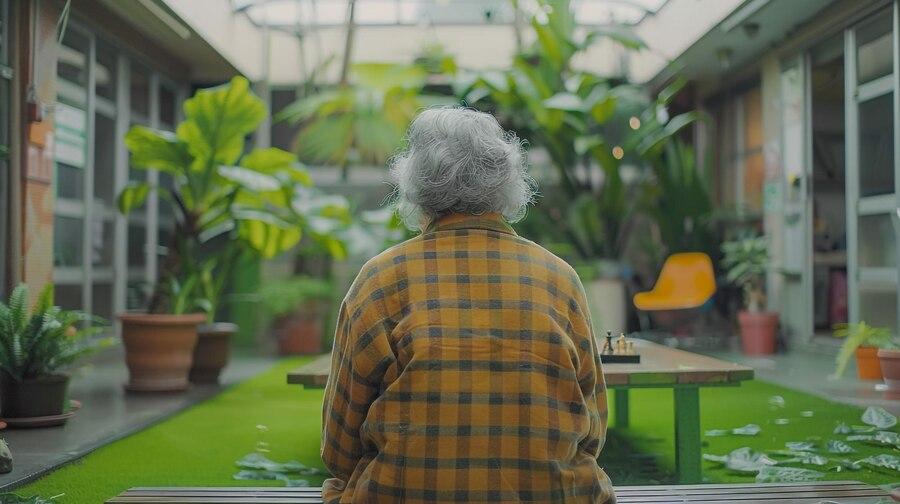



Table of Contents
- Overview of financial aspects in senior housing.
- Choosing the Right Senior Housing Option
- Legal Aspects of Senior Housing
- Health and Wellness in Senior Housing
- Transitioning to Senior Housing
- Innovations in Senior Housing Design
- Conclusion
- Faq's
Overview of financial aspects in senior housing.
When considering senior housing, it's essential to understand the financial implications associated with different options. Senior housing can vary significantly in cost, with each type offering different pricing structures and additional expenses. Independent living communities typically require a monthly rental fee that covers amenities such as utilities and maintenance, with extra costs for personal services or dining. Assisted living facilities involve a base monthly fee for housing and help with daily activities, but costs can rise with increased care needs. Nursing homes, or skilled nursing facilities, are generally more expensive due to the 24/7 medical care provided, with additional fees for specialized treatments. Memory care units, which cater to individuals with dementia, often cost more due to the specialized care and secure environment required. Continuing Care Retirement Communities (CCRCs) require an upfront entrance fee and monthly payments, covering access to various levels of care as needs change. Active adult communities, typically more affordable, charge a monthly rental or HOA fee for access to amenities but may have separate costs for healthcare services. Funding options include personal savings, long-term care insurance, veterans' benefits, and government programs like Medicaid, which can assist with covering costs. Effective financial planning involves budgeting for all potential expenses, understanding rental or service contracts, and comparing costs to find the best fit for individual needs and financial situations.
Choosing the Right Senior Housing Option
Selecting the right senior housing option is a significant decision that can impact an individual's quality of life and well-being. Here's a guide to help in choosing the most suitable senior housing option based on various factors:
Assessing Individual Needs
Health and Medical Needs: Consider the current health status and any medical conditions that may require special care. Seniors who need minimal assistance might opt for independent living, while those requiring ongoing help with daily activities might find assisted living or nursing homes more appropriate.
Lifestyle Preferences: Evaluate personal preferences regarding independence, social activities, and living environments. Some may prefer a vibrant community with numerous social activities, while others might prioritize a quieter, more private setting.
Evaluating Housing Options
Independent Living vs. Assisted Living: Independent living communities are ideal for seniors who are relatively self-sufficient but seek a maintenance-free lifestyle with access to communal activities. Assisted living facilities provide additional support with daily living tasks and healthcare, suitable for those who need more assistance but not full-time medical care.
Nursing Homes vs. Memory Care Units: Nursing homes offer extensive medical care and supervision for individuals with severe health conditions, while memory care units are specialized for those with dementia or Alzheimer's disease, focusing on secure environments and specialized cognitive care.
Continuing Care Retirement Communities (CCRCs): CCRCs offer a range of care levels within one community, allowing seniors to transition seamlessly from independent living to assisted living and nursing care as their needs change. This option provides long-term security and convenience.
Active Adult Communities: These communities are geared towards seniors who are active and seek an engaging lifestyle without requiring daily assistance. They offer amenities like fitness centers and social clubs, catering to those who enjoy a vibrant, independent lifestyle.
Touring Facilities
Key Questions to Ask: When visiting potential senior housing options, inquire about the quality of care, staff-to-resident ratio, available amenities, and any additional fees. Assess the overall cleanliness and safety of the facility and observe interactions between staff and residents.
Personal Tours: Schedule visits to multiple facilities to compare and contrast the environments, services, and community atmosphere. Engaging with current residents and staff can provide valuable insights into daily life within the community. Senior Housing
Senior Housing
Legal Aspects of Senior Housing
Understanding the legal aspects of senior housing is crucial for ensuring that residents' rights are protected and that they are aware of their responsibilities and obligations. Here's an overview of the key legal considerations:
Lease and Rental Agreements
Key Clauses: Lease or rental agreements in senior housing should clearly outline the terms and conditions, including the duration of the lease, rent amount, and what is included in the fee. Important clauses to review include those related to termination of the lease, renewal options, and policies regarding changes in care levels.
Rights and Responsibilities: Residents have the right to a safe and habitable living environment. The agreement should specify the landlord's obligations to maintain the property and provide necessary services. Residents should understand their responsibilities, such as maintaining the unit and complying with community rules.
Resident Rights
Understanding Resident Rights: Seniors have specific rights under various laws and regulations, including the right to privacy, dignity, and respectful treatment. These rights are often protected by state and federal regulations, such as the Fair Housing Act and state-specific senior care laws.
Protections Against Discrimination: Senior housing providers must comply with anti-discrimination laws, ensuring that housing decisions are not based on race, color, national origin, religion, sex, familial status, or disability.
Contractual Obligations
Provider Responsibilities: The senior housing provider is legally obligated to fulfill the terms of the contract, including providing agreed-upon services and maintaining the property. It's essential to review what is included in the base fee and what might incur additional costs.
Service Agreements: In assisted living or care facilities, service agreements should detail the level of care provided, including personal assistance, medical care, and any other support services. Legal Aspect Of Senior Housing
Legal Aspect Of Senior Housing
Health and Wellness in Senior Housing
Health and wellness are critical components of senior housing, significantly impacting residents' quality of life. Effective senior housing solutions integrate various health and wellness features to cater to the diverse needs of older adults. Here's a comprehensive overview:
Healthcare Services Provided
On-Site Medical Care: Many senior housing communities offer on-site medical services, including regular check-ups and health monitoring. This can include partnerships with healthcare providers, access to primary care physicians, and specialized medical services as needed.
Wellness Programs: Wellness programs are designed to promote physical health and mental well-being. These may include fitness classes, health screenings, and educational seminars on topics like nutrition and chronic disease management.
Emergency Medical Support: Immediate medical assistance is crucial in senior housing. Facilities often have emergency response systems, including 24/7 nursing care or rapid access to emergency services, ensuring prompt attention to health issues.
Fitness and Recreational Facilities
Exercise Options: Senior housing communities often feature fitness centers equipped with age-appropriate exercise equipment. Group fitness classes like yoga, aqua aerobics, and strength training help residents maintain physical health and mobility.
Recreational Activities: Engaging in recreational activities is vital for mental and emotional well-being. Facilities may offer hobbies, arts and crafts, gardening, and organized social events that encourage an active lifestyle and foster social connections.
Outdoor Spaces: Safe and accessible outdoor spaces such as walking paths, gardens, and parks contribute to residents' physical health and provide opportunities for relaxation and social interaction.
Mental Health Support
Counseling Services: Many senior housing options provide access to counseling and mental health support. This can include individual therapy, group therapy, and support groups for dealing with issues such as depression, anxiety, and grief.
Social Engagement: Social interaction plays a key role in mental health. Facilities often organize social events, clubs, and outings to help residents stay connected, reduce feelings of isolation, and enhance overall mental well-being.
Cognitive Stimulation: For those experiencing cognitive decline, memory care units offer specialized programs to stimulate mental function and support cognitive health through activities tailored to individual needs.
Nutrition and Dining
Balanced Meals: Nutritional health is a priority, and many senior housing communities offer balanced, nutritious meals that cater to dietary needs and preferences. This includes options for low-sodium, diabetic-friendly, and heart-healthy diets.
Dining Experience: The dining experience is designed to be enjoyable and social. Facilities often have dining rooms that encourage interaction among residents and provide a variety of meal choices.
Special Dietary Needs: For residents with specific health conditions, such as food allergies or diabetes, senior housing communities can accommodate special dietary needs and provide tailored meal plans. Health and Wellness Senior Housing
Health and Wellness Senior Housing
Transitioning to Senior Housing
Transitioning to senior housing can be a significant life change, requiring careful planning and adjustment. Here's a guide to help navigate this transition smoothly:
Planning and Preparation
Assessment of Needs: Begin by evaluating the senior's care needs, lifestyle preferences, and financial situation. Understanding these aspects will help in choosing the most suitable senior housing option, whether it's independent living, assisted living, or a nursing home.
Researching Options: Research various senior housing options to find facilities that align with the assessed needs. Consider factors such as location, amenities, care services, and community atmosphere. Visiting multiple facilities can provide a clearer picture of what each offers.
Financial Planning: Determine the budget for senior housing and explore funding options, including personal savings, long-term care insurance, veterans' benefits, and government programs like Medicaid. Review the cost structures and financial commitments associated with different housing options.
Making the Move
Organizing Logistics: Once a decision is made, start organizing the logistics of the move. This includes sorting and packing belongings, arranging for transportation, and scheduling the move-in date. Consider hiring professional movers who specialize in senior relocations for added convenience.
Downsizing: Moving to senior housing often involves downsizing. Decide which belongings to take, sell, donate, or discard. This process can be emotional, so it's helpful to involve family members and provide support throughout the downsizing process.
Documentation and Legal Matters: Ensure that all necessary legal and medical documentation is in order, such as health records, insurance information, and legal directives. Update any necessary documents to reflect the new address and contact information.
Adjusting to New Living Arrangements
Orientation and Integration: Upon moving in, take time to orient the new resident to their new environment. Familiarize them with the facility's layout, daily routines, and available services. Introduce them to staff and other residents to foster a sense of community.
Personalization of Space: Help the resident personalize their new living space to make it feel like home. Arranging familiar items and decorations can ease the transition and make the new environment more comfortable.
Engagement and Participation: Encourage participation in community activities and social events to help the resident integrate and build new friendships. Engaging in activities can alleviate feelings of loneliness and promote a positive adjustment to the new environment.
Ongoing Support
Regular Check-Ins: Regularly check in with the resident to ensure they are adjusting well and that any concerns are addressed promptly. Maintaining open communication can help identify and resolve issues early.
Feedback and Adaptation: Be open to feedback from the resident about their experience and adjust as needed. If any issues arise, work with the senior housing facility to find solutions and ensure the resident's needs are met
Family Involvement: Involve family members in the transition process and encourage them to visit regularly. Family support can be crucial in helping the resident adapt and feel connected.
Innovations in Senior Housing Design
Innovations in senior housing design are revolutionizing how communities cater to the needs of aging populations, emphasizing comfort, safety, and quality of life. Modern designs incorporate universal principles to ensure accessibility for residents with diverse physical abilities, featuring adaptable layouts and multi-functional spaces that evolve with changing needs. Smart technology plays a crucial role, integrating home automation, health monitoring systems, and advanced emergency response mechanisms to enhance convenience and safety. Wellness and comfort are prioritized through improved indoor air quality, abundant natural lighting, and ergonomic furnishings. Social engagement is fostered with multi-functional common areas, co-working spaces, and interactive technology, promoting a sense of community and active participation. Sustainable and eco-friendly practices, including energy-efficient systems, water conservation, and the use of sustainable materials, are increasingly integrated to reduce environmental impact.
Specialized care environments and personalized living spaces ensure that both physical and emotional needs are met, offering tailored solutions for memory care and advanced medical requirements. Collectively, these innovations create a more supportive, comfortable, and sustainable living environment for seniors, enhancing their overall well-being and quality of life.
Conclusion
In conclusion, innovations in senior housing design are transforming how we address the needs of aging populations, creating environments that prioritize comfort, safety, and engagement. By integrating universal design principles, smart technology, wellness features, and sustainable practices, modern senior housing communities are better equipped to support residents' physical, emotional, and social well-being. These advancements not only enhance the quality of life for seniors but also foster a vibrant, connected community. As the demand for senior housing continues to grow, ongoing innovation will play a crucial role in ensuring that these living environments are both functional and enriching, ultimately contributing to a more supportive and fulfilling experience for older adults.
explore further
Latest from Encyclopedia
More from Interactions
Resources
Dwello, for every home buyer, is a way to go from 'I feel' to 'I know', at no extra cost.




